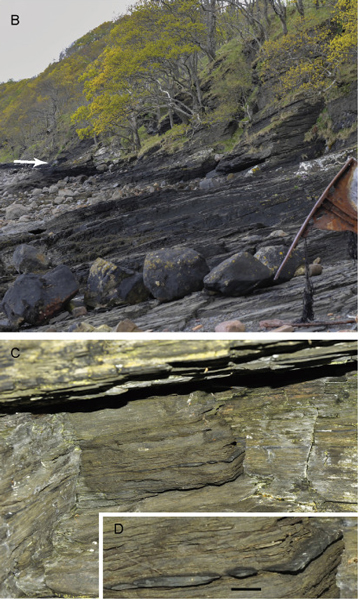An Amazing Billion-Year-Old Fossil from Scotland
A one-billion-year-old microfossil found in the Scottish Highlands has been shown to consist of two distinct cell types and could represent the earliest example of a multicellular animal ever recorded. Scientists from the University of Sheffield in collaboration with colleagues from Boston College (USA), have published a paper describing the discovery of a tiny fossil that provides a new perspective on the transition from single-celled organisms to more complex multicellular forms.

The photograph (above), shows an image of Bicellum brasieri, the cluster of cells measures around 20 microns in diameter, approximately 750 of these tiny organisms could sit on the head of a pin.
Lying Somewhere Between Single-celled and Multicellular Animals
The microscopic fossil material comes from the Mesoproterozoic-aged Diabaig Formation, which is exposed at Loch Torridon in the Northwest Scottish Highlands. It has been named Bicellum brasieri, the genus name being derived from the two types of cells (elongate and isodiametric) that were identified in the tightly grouped cell clusters.

Classified as a Holozoan
Writing in the academic journal “Current Biology” the researchers who include lead author Professor Charles Wellman from the Department of Animal and Plant Sciences (Sheffield University), have assigned this primitive lifeform to the Holozoa – a clade that includes all animals and their closest single-celled relatives but excludes fungi. If their interpretation is correct, then B. brasieri is distantly related to all living animals including our own species Homo sapiens.

A Remarkable Record of a Significant Development for Life on Earth
The shales of the Diabaig Formation were laid down at the bottom of a freshwater lake. The microfossils preserved in these rocks represent planktonic and benthic forms of microscopic life that existed around a billion years ago. The discovery suggests more complex lifeforms were evolving during this time in Earth’s history. The material could represent the earliest multicellular animal known to science.
Professor Wellman explained:
“The origins of complex multicellularity and the origin of animals are considered two of the most important events in the history of life on Earth, our discovery sheds new light on both of these. We have found a primitive spherical organism made up of an arrangement of two distinct cell types, the first step towards a complex multicellular structure, something which has never been described before in the fossil record.”

Did the Animalia Evolve in the Sea or in Freshwater?
The exceptional preservation of the fossils enabled the research team to analyse them at both a cellular and subcellular level. The discovery of Bicellum brasieri challenges the long-held theory that complex life evolved in marine environments.
Professor Paul Strother, lead investigator of the research from Boston College stated:
“Biologists have speculated that the origin of animals included the incorporation and repurposing of prior genes that had evolved earlier in unicellular organisms. What we see in Bicellum is an example of such a genetic system, involving cell-cell adhesion and cell differentiation that may have been incorporated into the animal genome half a billion years later.”
This study has shed new light on the transition of single-celled organisms to more complex, sophisticated forms with cell specialisation.
The Boston College professor added:
“The discovery of this new fossil suggests to us that the evolution of multicellular animals had occurred at least one billion years ago and that early events prior to the evolution of animals may have occurred in freshwater like lakes rather than the ocean.”
The scientific paper: “A possible billion-year-old holozoan with differentiated multicellularity” by Paul K. Strother, Martin D. Brasier, David Wacey, Leslie Timpe, Martin Saunders and Charles H. Wellman published in Current Biology.
Visit the Everything Dinosaur website: Everything Dinosaur.

